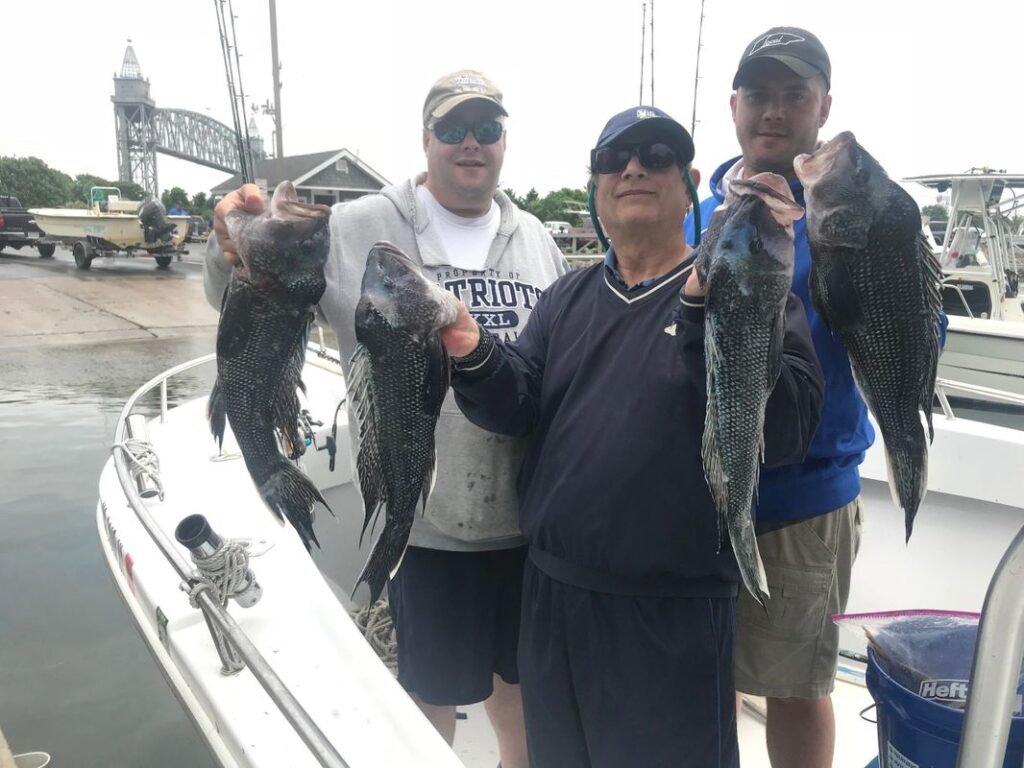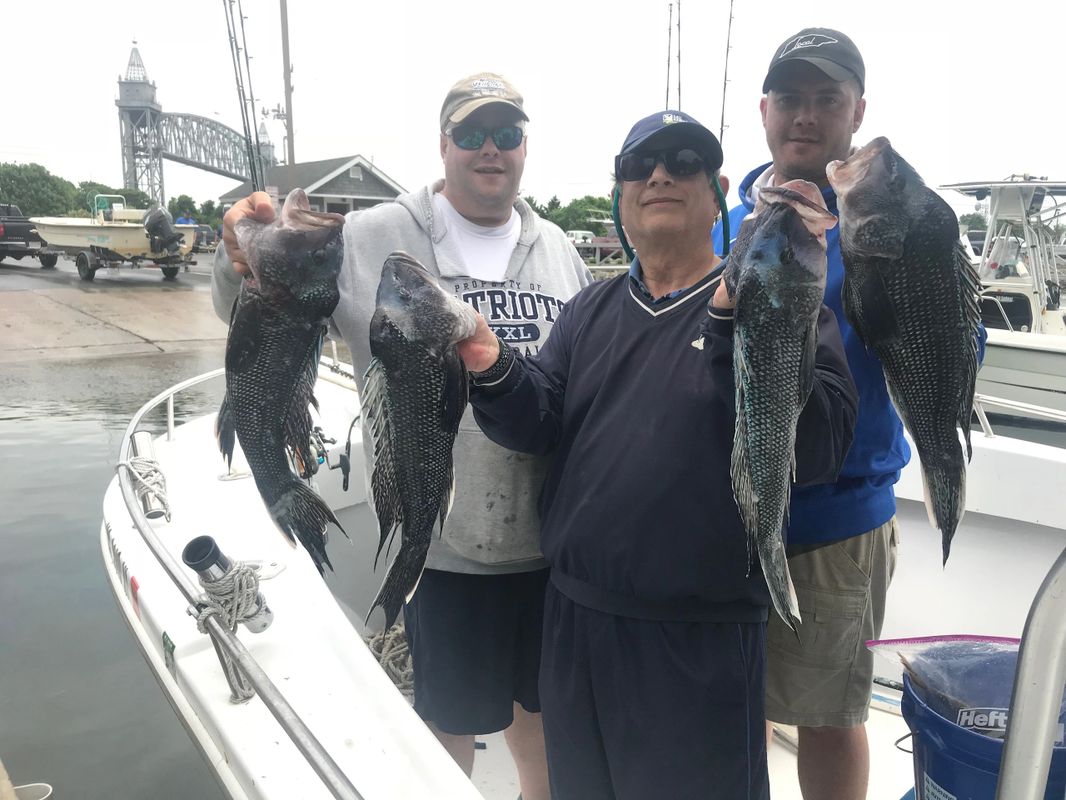
What’s not to like about Black Sea Bass? They are fun to catch, they are plentiful, and they are delicious.

I own and operate Fishnet Charters, running a 26 foot center console boat with a 350 horsepower engine. I keep my boat on a trailer, allowing me great mobility to launch from ramps that are convenient and close to prime fishing along the Massachusetts and Rhode Island coasts. While I certainly pursue striped bass and bluefish (and on occasion accidently hook into Great White Sharks), in the spring my clients often want to get in on the great Black Sea Bass fishing in Buzzards Bay.
Black Sea Bass season in Massachusetts typically opens around the second weekend in May. Peak time for targeting these fish in Buzzards Bay usually runs from the last week of May into the first week or two of June, but there’s no shortage of these fish throughout the season. Indeed, the entire season could fairly be called prime time. As of this writing, there are proposed changes to the regulations governing Black Sea Bass, and so you should review the most current Massachusetts regs before you plan a trip.
Fishing for Black Sea Bass has become quite popular—so popular that the parking facilities at many of the launch ramps around the Taylor Point area, for example, are completely filled before 6 a.m. at peak season and on weekends. That’s when I launch my boat from New Bedford, taking a slightly longer run to the fishing grounds in order to avoid lengthy delays at other launch sites.
On a typical morning charter in June, I will urge my clients to spend the first 1 ½ to 2 hours chasing striped bass, since I am confident that they will catch their limit of Black Sea Bass in the remainder of the five hour trip.
Finding the schools of Black Sea Bass is not difficult. On some days you will see as many as 100 boats drifting around the entrance to the Cape Cod Canal, Bird Island and Cleveland Ledge—all well known Black Sea Bass haunts. I usually opt to avoid the crowd and find my own fish, looking for spots with similar depths and bottom structure. A broad generalization would be 25-40 feet of water with a rocky bottom.
On my boat, I provide sturdy tackle for this kind of fishing—conventional reels loaded with 60 pound test braided line on six foot custom rods rated for 20-40 pound test line. Terminal tackle generally includes three feet of 50 pound test flurocarbon leader attached to a 3.5 ounce Verta Jig that’s rigged with assist hooks. Above that, using a dropper loop, there will be a soft plastic squid immitation impaled on a 7/0 hook. Technique is simple: Send the rig to the bottom and jig it one to two feet up and down as the boat drifts. The assist hooks ride above the part of the jig that strikes bottom, and that helps to avoid snagging rocks or other debris. On rare occasions, if the fish become finiky, we will add a strip of local squid to the hooks.
As mentioned above, Black Sea Bass are yummy almost any way that you prepare them. The filets are firm and white, ideal for grilling when brushed with a bit of olive oil, sprinkled with your favorite seasoning, and served with a wedge of fresh lime. Enjoy!
Capt. Mel Ture has been a speaker at several RISAA seminars. You can reach Fishnet Charters, his charter fishing business, at https://captainmeltrue.com.